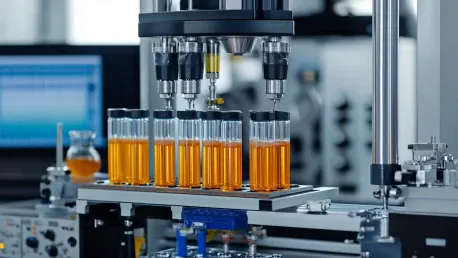In the competitive world of drug production, efficiency is critical for maximizing profit in Schedule 1 operations. Automating the mixing process can drastically cut down on manual labor, allowing for higher yields and more consistent product quality. The initial stages may involve manual processes, but as the enterprise grows, transitioning to automation becomes indispensable. This guide details the steps and components needed to automate mixing in Schedule 1, thereby ensuring a streamlined and effective operation.
What You Need to Automate Mixing
Before transitioning to an automated mixing system, it’s essential to have the right personnel and equipment. Key staff members such as a Handler and Chemist are crucial for overseeing different stages of the process. On the equipment side, necessary items include a Management Clipboard, a Mixing Station, an Oven, and Storage Racks. These components and personnel will form the backbone of your automated mixing setup.
Securing these resources is relatively straightforward, as they become available after completing a few main story missions. Once you have the required items and sufficient funds, you can hire staff. It’s worth noting that automation in Schedule 1 is initially manual, with each task needing to be performed by hand. However, once the setup is in place, the process can be largely hands-off, providing more time to focus on other aspects of the operation.
The Management Clipboard allows for oversight and control over staff and equipment assignments. The Mixing Station is where the drug components are combined, while the Oven is used specifically for certain drugs like meth. Storage Racks are essential for keeping supplies and finished products organized. Having a Handler to manage logistics and a Chemist for the actual mixing means you can dedicate each role to its specific task, ensuring efficiency and minimizing errors.
Schedule 1 Automation Explained
The first crucial step in establishing an automated mixing loop is to employ a Handler and a Chemist. These individuals will be responsible for critical aspects of the mixing process. It is imperative to ensure these staff members are adequately compensated and have been assigned sleeping quarters to avoid any disruptions to the workflow. Once employed, these trained professionals will help facilitate the automation and ensure smooth operation.
Using the Management Clipboard, you should assign the Handler to the Packaging Station. This allows for better control over the flow of products through your operation. The next task is setting up routes within the Management Clipboard to create a seamless loop. This loop enables products to move from the Storage Rack containing materials, such as meth and bags, to the Packaging Station. Additionally, properly managing these routes ensures that the Handler’s movements are optimized, reducing unnecessary downtime.
After assigning the Handler, attention must shift to the Chemist. Assign the Chemist to a Chemistry Station, a critical component of the mixing loop. If producing meth, you will also need to allocate them to an Oven. To maximize efficiency, place the Oven beside the Chemistry Station. Use the Management Clipboard again to set the Chemistry Station’s output destination to the Oven, then direct the Oven’s output to the same Storage Rack used for packaging by the Handler. This configuration ensures a fluid and effective process from start to finish.
Automated Mixing Loop Explained
Once all components are set up and staff assigned, the automated mixing loop begins functioning seamlessly. The system’s success hinges on maintaining a steady supply of ingredients in the designated Storage Rack. Providing a consistent flow of materials such as Pseudo, Acid, and Phosphorus ensures uninterrupted production and maximizes profitability. The following is a succinct breakdown of the automated mixing process:
Firstly, the Storage Rack must be stocked with the necessary ingredients. The Handler’s responsibility is to transport these ingredients to the Chemistry Station. The Chemist will then mix the components and place the resultant product in the Oven. Following the cooking process, the Chemist moves the final product to the product and bagging Rack. Here, the Handler utilizes the Bagging Station to prepare the product for distribution.
Post-packaging, the Handler places the prepped drugs on the final Storage Rack, ready for sale or handoff to a dealer. This method ensures a consistent output and reduces the need for manual oversight. Although this example focuses on meth production, it can be adapted to various drugs by changing the ingredients and relevant stations.
As the operation expands, it’s feasible to establish multiple simultaneous loops, maintaining a constant stream of products. This requires adequate staffing and efficient organization of stations and racks. Proper setup ensures not only increased production but also systematic workflow management, crucial for the enterprise’s long-term success.
Maximizing Efficiency and Beyond
In the highly competitive realm of drug production, operational efficiency is crucial for maximizing profits, especially in Schedule 1 operations. Automating the mixing process can significantly reduce the need for manual labor, thereby facilitating higher production yields and ensuring consistent product quality. While initial stages of production might rely on manual practices, it’s essential to transition to automated systems as the business scales up. Automation not only boosts productivity but also enhances the precision and reliability of the mixing processes. This guide outlines the necessary steps and components required to automate mixing processes in Schedule 1 operations, ensuring a streamlined and highly effective production line. By adopting automation, companies can stay competitive and achieve superior results, thereby improving both their bottom line and market position.









